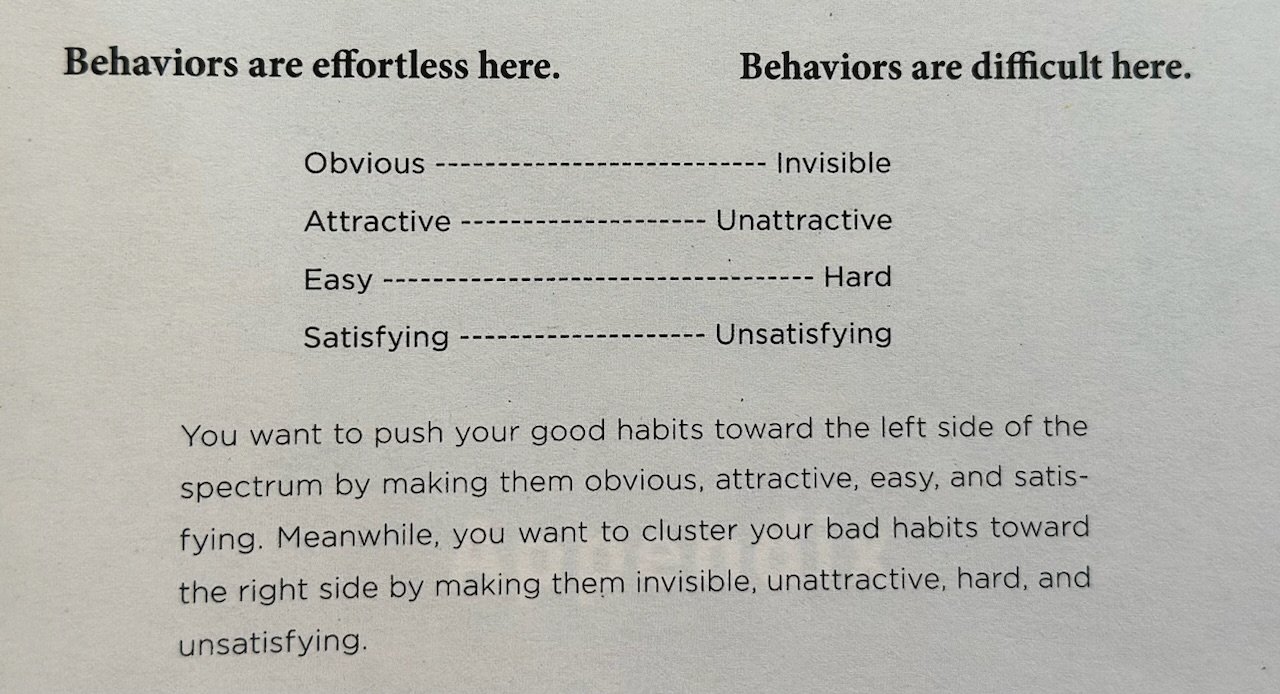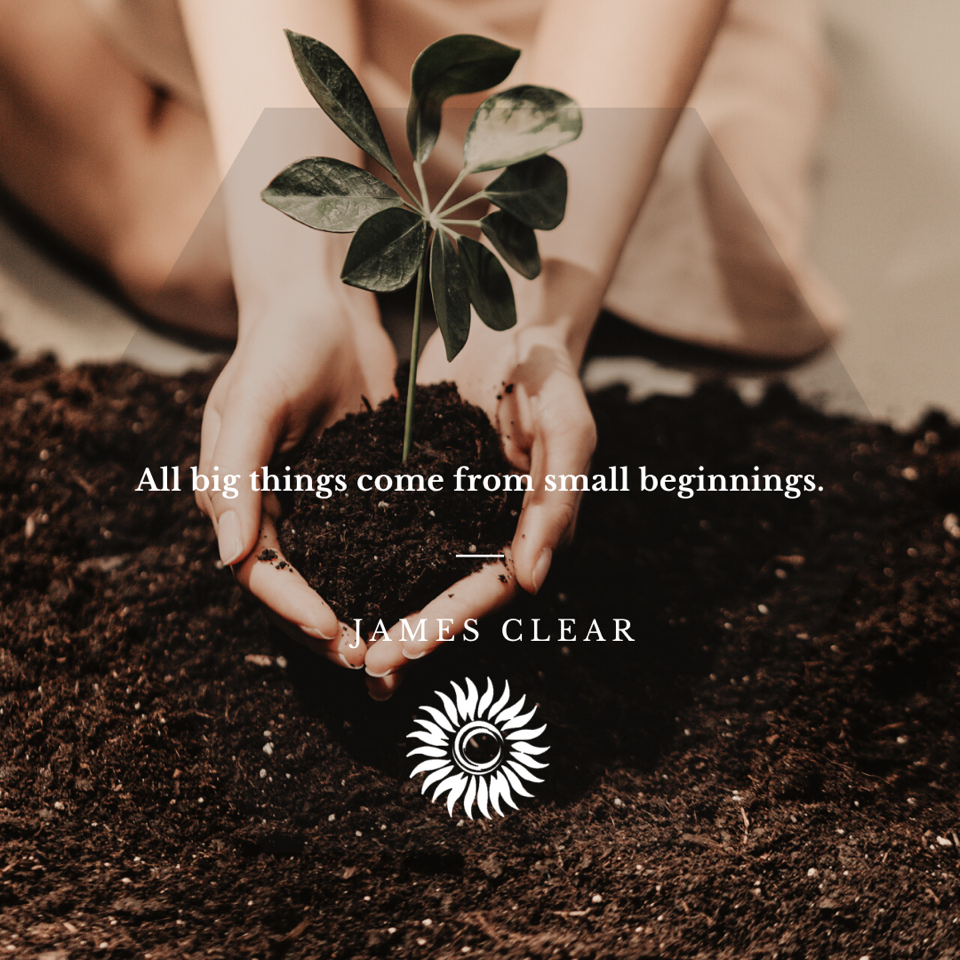The North Star of Habit Change
As a self-appointed “wisdom gatherer,” I’m always curious about the primary insights offered by self-help books that attain astronomical popularity. One such book is Atomic Habits: An Easy & Proven Way to Build Good Habits & Break Bad Ones, by James Clear. Featuring the tagline “Tiny Changes, Remarkable Results,” this book has sold over 10 million copies worldwide, and is still a #1 bestseller on Amazon five years after its release.
The book is based on a critical lesson Clear learned as young man in the wake of a devastating head injury. By patiently and consistently taking minuscule steps forward on his healing journey, Clear managed to make a full recovery, which convinced him that even the tiniest “atomic” changes will make a dramatic impact over time.
When it comes to establishing new habits, Clear explains that much like peeling back an onion, there are three levels at which change can occur. “Outcomes,” the outer layer, are associated with our goals and the results we want to achieve. “Processes,” the middle layer, are about the behaviors and routines we implement to achieve our goals. “Identity,” the innermost layer, relates to the beliefs we carry about ourselves and the world. Clear says that focusing on modifying our identity is the most powerful way to achieve lasting change.
To illustrate this principle, Clear asks us to imagine two people who both want to quit smoking. When offered a cigarette, person #1 replies, “No thanks. I’m trying to quit,” while person #2 answers, “No thanks. I’m not a smoker.” Although these two responses sound similar, what makes them worlds apart is that the second person is conveying that they no longer identify as a person who smokes. They have shifted to viewing smoking as a part of their former life, not their current one.
Because person #2 identifies as a non-smoker, it is less likely that the gravitational pull of their old identity will sabotage their new commitment to quit smoking. “The ultimate form of intrinsic motivation is when a habit becomes part of your identity,” Clear writes. “It’s one thing to say I’m the type of person who wants this. It’s something very different to say I’m the type of person who is this.”
Identity Allegiance—For Better or for Worse
Clear explains that an allegiance to our identity can be a powerful force for change or a powerful hindrance to it. When we’ve repeated a story to ourselves for a long time, it’s easy to blindly accept it as fact, and it often becomes a self-fulfilling prophecy.
As I shared earlier this year in a blog called “Breaking Free” about learning to play the guitar, for most of my life I claimed to have “the worst voice in the world.” I was so self-conscious about singing that when I was the one carrying out a birthday cake during a celebration, I’d enlist someone else to start the song so I could hide my voice in the crowd. But when I finally put my perfectionism aside and risked belting out songs while strumming my guitar, I realized that I could actually hold a tune most of the time. It was my belief that I had a horrible voice that had trapped me into never using it, which meant that I never had the opportunity to improve it. Now singing freely brings me great joy.
Clear, who views identity change as the “North Star” of habit change, points out that the more we repeat a new behavior, the more we reinforce the new identity associated with that behavior. Each time a former smoker resists a cigarette, the more strongly they will identify as a non-smoker. “The most practical way to change who you are is to change what you do,” he writes.
Certain that we all have the power to change our self-image, Clear reminds us that our identities are not set in stone, and that every action we take is a vote for the person we wish to become. “You have a choice in every moment. You can choose the identity you want to reinforce today with the habits you choose today.” And each time we make a choice that aligns with our commitments, we are solidifying this new facet of our identity while building more self-trust and self-confidence.
Finding Our North Star
The principles of effective habit-building apply just as much to our thought patterns as they do to the actions we perform in the physical world. I witnessed my father—a Holocaust survivor who was mired in unrelenting fear and depression for decades—become the most joyful person I have ever known because he made happiness his North Star. After deciding he wanted to become a person with full agency who relished life, instead of a person who identified as a suffering victim, my father diligently retrained his mind to focus on all that is beautiful in the world and everything that brought him delight. Just as Clear promises in Atomic Habits, this shift, that felt awkward to my father at first, eventually became his new automatic default.
While I can often be overly disciplined and lack flexibility when it comes to sticking with my “good habits,” there is one goal I’ve had for decades that I’ve yet to achieve to my satisfaction: being more grounded, mindful and present. Despite all the healing work I’ve done, my habitual pattern of spending the majority of my time lost in my busy thoughts is still very entrenched.
Applying Clear’s “North Star” concept to my mindfulness goal, I’ve realized that the first thing I need to change is my inner dialogue about my identity. Now, instead of continuously declaring myself to be a person who has an “impossibly overactive mind”—an identity that makes me feel hopeless and discouraged—I have begun to identify myself as someone who “makes being mindful a top priority.” After all, this has been my aim for the majority of my life!
Once we know our goal and adjust our “identity,” Clear says we need to create an implementation intention: a specific plan about when, where, and how we will take action.
It turns out that Katie Dutcher—the meditation and mindfulness teacher whose wonderful work is featured in Quest for Eternal Sunshine’s Take a Moment micro-meditation series, as well as in our Mindful in Nature and Start Your Mindfulness Practice resources—is a big fan of James Clear’s work. She regularly utilizes many of his principles when helping her students solidify their meditation and mindfulness practices.
“I always cite Clear’s advice to start small, tiny even, and to make your practice easy, especially when starting out,” Katie told me. “Repetition and regularity are our first priorities when starting a habit. The short meditation that you actually do is worth a lot more than the long meditation that you want to do, but never get to.”
Two other insights from Atomic Habits Katie frequently imparts are “habit stacking” and “make it obvious.” The idea here, she says, is to establish a clear cue for executing a new habit by stacking it together with an established one. “For example, if you always take an evening walk, the end of your walk can become your signal to sit on a bench and meditate for two minutes. If you drive to and from work, perhaps you take one minute to tune into your body and breathe deeply in your car before going inside.”
Katie encourages everyone to figure out what works best for them. “Be on the lookout for opportunities that beckon you to make small choices in service of your wellbeing, such as putting down your phone to step outside into the sunshine for a moment, or lean to against a tree.” She teaches that the most beneficial mindfulness practices are the ones that are woven right into the fabric of your daily life. “Focus on building tiny wins, all in a row. Today, just make one tiny action in service of this habit, and then do it again tomorrow.”
I’ve made a number of promises to myself about when I will regularly pause for mindful minutes throughout my day. And right now, as “a person who makes being mindful a top priority,” I’m off to do the “Feel Your Body Supported” Take a Moment micro-meditation shared below, in case you'd like to join me...
Take a Moment Micro-Meditation
Tiny pauses to be right here, right now can have big results. Our Take a Moment series of micro-meditations—all under two minutes long—make taking mindful pauses as easy as possible. We invite you to "Take a Moment" to find the calm that is always within you.







